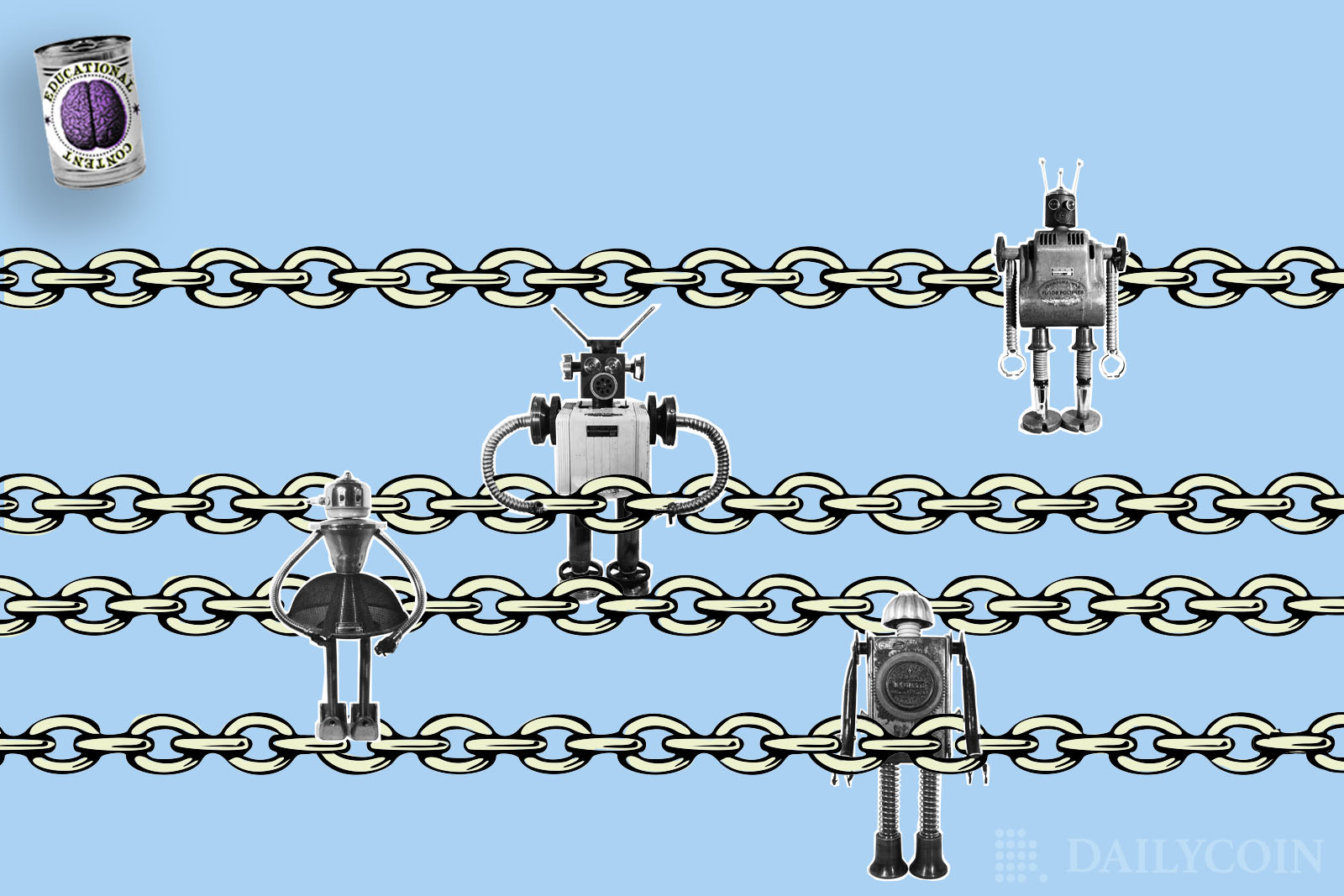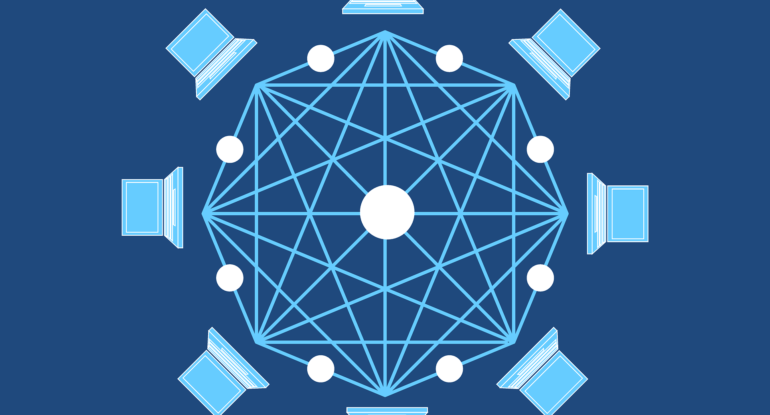
Blockchains are a method of storing data online using time-stamped pacts of data called blocks. Several data blocks come together to form the blockchain and are typically managed by a cluster of interconnected computers, popularly known as blockchain nodes.
One of the major features that makes blockchain technology a revolutionary innovation is its decentralization, meaning it works as a public and permissionless network with no central authority. It relies on an interconnected network of servers, another description for blockchain nodes.
Blockchain nodes are responsible for storing, preserving, and spreading blockchain data. They constantly share data, ensuring every node on the network remains up to date.
The concept of “nodes” might sound strange to you if you are new to the blockchain space. However, you might have heard of the term somewhere and have mysteriously found your way to this page searching for knowledge. Well, you are not alone!
Sponsored
In this piece, we’ll uncover what a blockchain node is, how it works, just how important it is in decentralized networks, and more.
What Is a Blockchain Node?
Blockchain nodes are a network’s stakeholders and/or their devices, which are assigned to keep a copy of the distributed ledger and serve as communication points that execute various essential network functions. Nodes basically communicate with each other within the network and transfer information about transactions and new blocks.
Sponsored
A blockchain node’s main purpose is to verify the validity of each succeeding batch of network transactions, called blocks. It is a vital component of the blockchain infrastructure that helps maintain the network’s security and integrity. Each node is distinguished from others by a unique identifier.
Moreover, nodes are classified based on distinct roles played in the blockchain ecosystem. While there are at least two categories of nodes on a blockchain network, some (validators) are primarily responsible for validating the transaction record of the blockchain, whereas other nodes (miners) are required to maintain transaction records while adding new blocks to the network.
The different roles nodes play in a Blockchain network are defined by the requirements of the network in question. For example, some nodes are dedicated to storing transaction records, while others cannot keep any records.
Why Blockchain Nodes Are Important in Decentralized Networks

Blockchain technologies such as Bitcoin and Ethereum are examples of decentralized architectures and systems. Nodes are central to how both operate. Different nodes in a blockchain are assigned to different roles. But we can say that there are three general purposes that nodes serve.
1. Maintaining the Blockchain
Since blockchains are decentralized ledgers, there is no centralized server where their database can be stored. But every blockchain network continuously grows as more blocks are added to the chain.
Not only does a blockchain need a decentralized storage space to keep all the data, but it should also be scalable. This requirement is fulfilled by using blockchain nodes.
All decentralized networks, such as Ethereum and Bitcoin, store their blockchain data on several thousand nodes across the globe. Each node preserves its own copy of the blockchain and keeps syncing it as new blocks are minted.
2. Validating a Transaction
Running a decentralized network means there is no centralized authority to check and approve transaction orders. Instead, the nodes (which are randomly chosen) are tasked with approving transaction orders on the blockchain.
Some nodes participate in the consensus algorithm to verify transactions’ validity, while others are responsible for storing transaction records. The complete process includes nodes receiving a transaction order, checking its authenticity, approving or rejecting it, and then recording it on the ledger.
3. Accessing Information
All decentralized networks are transparent, allowing all users to access all information without barriers. To do this, users must indirectly or directly interact with nodes to access any information on the blockchain. However, unlike centralized platforms, users do not require permission to access this information.
When you use a third-party blockchain explorer, such as Etherscan, to explore information on transactions on the Ethereum blockchain, you are communicating with the blockchain nodes to access the data.
The block explorer is simply an interface that connects you to a node and lets you read data from it. Some nodes store that data, while others provide access to it.
How Do Nodes Help Secure a Blockchain?
Nodes are very instrumental in securing the blockchain. They do this by keeping the record in synchronization with the latest transactions. Due to the large number of nodes, it’s practically impossible for a hacker to alter a node’s record and remain undetected. The data remains secure because hackers cannot erase data copied across thousands of different nodes.
In addition, some inherent problems in centralized systems, such as hacks, power outages, and system crashes, are not a threat to a blockchain network, mostly because the data is duplicated and spread across multiple nodes. If a problem ensues on one node, the availability of other nodes guarantees that the network continues to operate as normal, and users can access the required resources at all times.
Node Vs. Miner: What’s the Difference?
There are at least 1,000 blockchains, and many of them, including Bitcoin, use cryptocurrency mining to validate transactions. A miner, in this context, is a specialized node that confirms groups of transactions and receives crypto rewards in return. Fundamentally, nodes and miners handle different parts of the transaction process.
The process starts with nodes validating transactions. Miners, on the other hand, compete with each other to win the right to confirm those transactions. However, how this is achieved across different blockchains varies and largely depends on the blockchain’s consensus mechanism.
In the most common method, known as proof of work, miners race to be the first to solve a mathematical equation. In some other cases where a blockchain network uses a proof of stake (PoS) consensus algorithm, miners are randomly selected for the same activity.
Generally, the winning miner assembles transactions into a block and confirms them. Afterward, it broadcasts the block to the network to be reviewed by the nodes. Each node checks that everything in the block is valid and then adds the validated block to its blockchain.
Types of Blockchain Nodes
There are many blockchain nodes, and they are grouped by the functions they perform. Regardless of how they differ, all nodes in the network work toward sustaining the integrity of a network. Here are the top blockchain nodes you should know about:
1. Full Nodes: Full nodes are the servers of a decentralized network. Essentially, they store the complete blockchain. They preserve a blockchain’s transaction history and sync, store, copy, and distribute data while validating new blocks. Full nodes are further categorized into two types: pruned and archival.
The pruned nodes do not qualify entirely as full nodes as they do not perform the entire function of a full node. Specifically, the pruned nodes only maintain a substantial part of the blockchain, using it to carry out their verification processes like any other full node.
On the other hand, an archival node inherits the same capabilities as a full node and builds an archive of historical states.
2. Light Nodes: They are tasked with storing data and providing only the required information to facilitate daily tasks or enable faster transactions. They don’t validate the blocks; rather, they store the headers of blocks.
3. Mining Nodes: These nodes are the workhorse of any blockchain infrastructure. They confirm transactions by including them in blocks. In the early days of blockchain, each crypto miner operated a mining node. Today, many miners work together in mining pools. These pools utilize teamwork by concentrating the efforts of several miners into a single mining node. This gives them a better chance to score the mining reward.
4. Staking Nodes: These nodes basically validate transactions in a blockchain network and are responsible for maintaining the consensus algorithm. In Proof of Stake (PoS), staking nodes are used to stake or invest their money and verify the transaction. Upon successfully validating the transaction, they are incentivized with cryptocurrency rewards in return.
5. Supernodes: Supernodes connect full nodes and help spread information across the network to ensure that everyone has accurate data. They handle off-chain functionality. They offer validation, authorization, gateway services, and support. They also facilitate voting events, compliance with blockchain laws, and execution of protocol events.
Bitcoin Nodes vs. Ethereum Nodes vs. Cardano Nodes
Bitcoin is the most well-known cryptocurrency in the world. A Bitcoin node is a part of the Bitcoin blockchain, and there are more than 13,500 reachable Bitcoin nodes. A surprising number, no doubt, as more than 83 million people use Bitcoin worldwide.
Moreover, there is no definitive method of counting the exact number of Bitcoin nodes because some nodes are inactive and operate privately. Running a Bitcoin node can enhance security and beef up privacy.
Ethereum nodes are very similar to Bitcoin nodes. At the time of writing, there are over 8,000 active Ethereum nodes. Running an Ethereum node requires certain administrative skills.
On the other hand, Cardano nodes are becoming more popular these days. These are the top-level nodes that underline the Cardano network. The topology is slightly different from Ethereum and Bitcoin as it doesn’t store a copy of transactions on each node. Rather, the system appoints a leader among a collection of nodes, which ultimately verifies and validates a transaction.
Why You Should Care
Nodes are an essential component of blockchain technology; they keep all participants honest and ensure data integrity. Furthermore, different types of nodes have distinct functions; however, they all work together to sustain decentralized networks. Ultimately, nodes are the backbone of any blockchain infrastructure, ensuring that the technology remains decentralized and secure at all times.
Find out more about cross-chain bridges and explore some alternatives to choose from:
8 Best Cross-Chain Bridges That Connect Multiple Blockchains
Learn about decentralized identity and its role in blockchain development:
Decentralized Identity: What Does It Mean and How Is It Managed in Blockchain?
